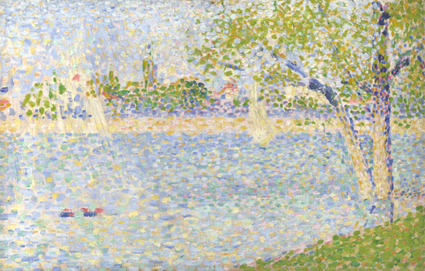He died quite suddenly, of diphtheria, at 31. Few artists of comparable stature had briefer lives, but he somehow failed to qualify as a Tragic Figure. Irving Stone never wrote the novel; Kirk Douglas never played him in the movie. Maybe it is not that surprising. Georges Seurat was a deliberate, methodical man, whose chief pictorial innovation - the technique with which he is famously associated, known most commonly as ''pointillism'' - had decisively influenced the course of modern art by the time of his death. If few mourned his passing it was, you might say, because he had already made his point.
A number of major paintings are missing from the Seurat retrospective currently at the Grand Palais in Paris. A Bathing Place, Asnieres has remained at the National Gallery; A Sunday Afternoon on the Island of La Grande Jatte at the Art Institute of Chicago; Le Chahut at the Rijksmuseum Kroller- Muller, Otterlo. This matters far more in the case of Seurat than it might in the case, say, of Monet. He, unlike the Impressionists, structured his oeuvre around a sequence of major studio paintings. He made innumerable studies - most of which are at the Grand Palais - for such works; but to see the studies without the end product is to witness the rehearsal without the performance.
Looked at in isolation, Seurat's oil sketches - many done on cigar-box lids - can suggest that he was an artist in the Impressionist mould. Take those for La Grande Jatte: the sun-dappled, riverside promontory is handled in a free, broken manner; figures are rapidly noted, indicating that these works were painted en plein air. Seurat, here, might be mistaken for an improvisatory painter.
In fact, La Grande Jatte is one of the most calculated paintings in existence. The...


